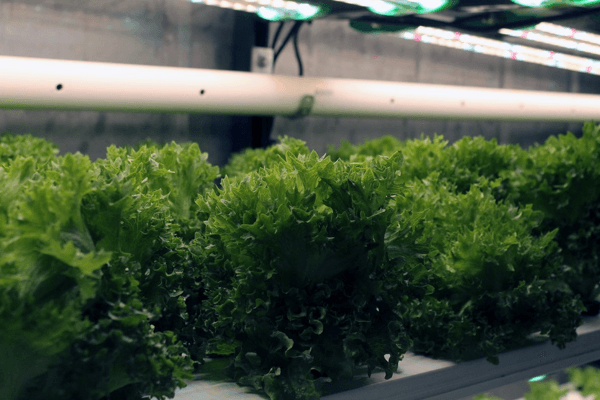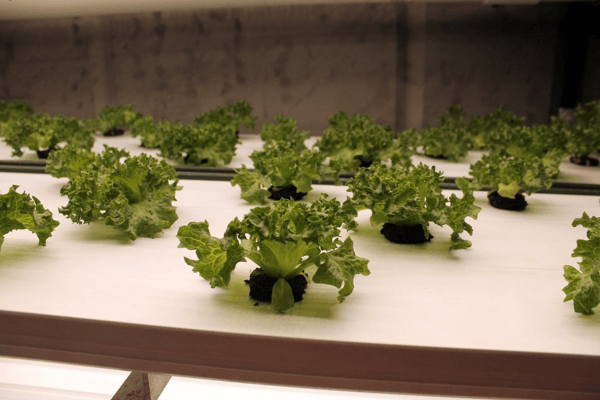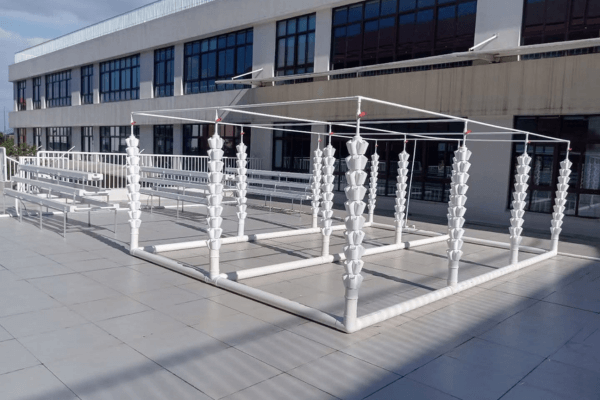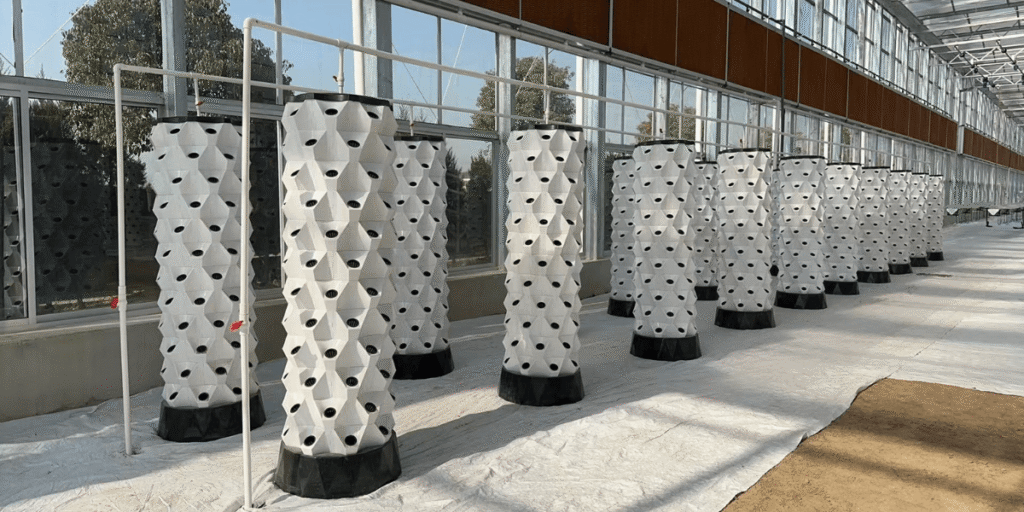Hydroponics for Urban Farming is reshaping our cities in remarkable ways. What once were concrete jungles are now blossoming into vibrant green oases, as rooftops and balconies transform into fertile gardens. With urban populations soaring and the demand for fresh, local food rising faster than ever, urban farming has become more than just a trend; it is a powerful movement toward a healthier, more sustainable future. At the heart of this revolution lies hydroponics, a soil-free, innovative method perfectly designed to meet the challenges and opportunities of city living.
Whether you dream of harvesting crisp greens on your balcony, cultivating herbs in a spare room, or turning a small backyard into a lush garden, hydroponics makes it possible for everyone, even beginners and families. To inspire the next generation, Hydroponics for Kids offers a fun and educational gateway into this exciting world of urban farming.
Why Choose Hydroponic for Urban Farming?
Traditional farming needs lots of open land, something that’s hard to find in busy cities. That’s where hydroponics truly shines, revolutionizing the way we grow food. Here’s why it’s the perfect fit for urban living.
- Space-Saving Superstar: Hydroponics allows for vertical stacking, meaning you can grow more food in a footprint as small as a closet or a windowsill. This is invaluable in space-constrained cities.
- Water Wise: Urban areas often face water restrictions. Hydroponic systems use up to 90-95% less water than soil-based gardening because water is recirculated, not lost to evaporation or runoff.
- Pest-Free & Pesticide-Free: Growing indoors or in controlled environments drastically reduces pest infestations, eliminating the need for harmful chemical pesticides. Enjoy cleaner, safer produce.
- Year-Round Harvests: No more waiting for seasons! With controlled lighting and environment, you can grow your favorite vegetables 365 days a year, regardless of the weather outside.
- Faster Growth, Bigger Yields: Optimal nutrient delivery and ideal conditions lead to quicker growth cycles and significantly higher yields compared to traditional methods.
Urban Hydroponic Essentials: What You Need to Start
Before you dive in, understand the core elements every hydroponic system needs. Think of these as your garden’s building blocks:
- Nutrient Solution: This is your plants’ food. It’s water mixed with precise concentrations of essential minerals (macronutrients like Nitrogen, Phosphorus, Potassium, and micronutrients like Iron, Boron, etc.).
- Water: Quality matters! Use filtered, reverse osmosis, or distilled water to start, as tap water can contain impurities or high mineral content that interfere with your nutrient balance.
- Oxygen: Plant roots need oxygen to breathe. This is usually supplied by an air pump and air stone in the reservoir, or by systems that expose roots to air periodically.
- Light: Whether it’s natural sunlight (if growing outdoors or in a very sunny spot) or artificial LED grow lights (recommended for consistent indoor growth), plants need proper light for photosynthesis.
- Growing Medium (Optional, but common): While “soilless,” many systems use inert materials like rockwool, coco coir, perlite, or clay pebbles to support the plant and retain moisture.
- pH Testing Kit: Crucial for monitoring and adjusting the acidity/alkalinity of your nutrient solution, ensuring nutrients are available to plants (ideal range is typically 5.5-6.5 for most crops).
- Water Pump & Air Pump (for active systems): These circulate the nutrient solution and oxygenate the water.
- Reservoir: A container to hold your nutrient solution.

Best Beginner Hydroponic Systems for Urban Gardening
For urban dwellers new to hydroponics, simplicity and compact design are key. Here are two highly recommended systems to start with:
How Deep Water Culture Works in Urban Hydroponics
How it Works: Plants sit in net pots with their roots submerged directly into a nutrient-rich water solution. An air pump and air stone keep the water oxygenated.
- Why it’s Beginner-Friendly: It’s one of the simplest and cheapest systems to set up. There are few moving parts, making it easy to understand and maintain.
- Ideal for: Leafy greens (lettuce, spinach, kale), herbs (basil, mint).
- DIY Potential: Easily built with a plastic bin, net pots, an air pump, and an air stone.
Using a Wick System in Compact Urban Spaces
How it Works: This is a passive system. A wick (like a piece of felt or rope) draws nutrient solution from a reservoir up into a growing medium around the plant roots via capillary action.
- Why it’s Beginner-Friendly: Requires no pumps or electricity (except for grow lights if indoors), making it incredibly low-maintenance and quiet.
- Ideal for: Smaller, non-fruiting plants like herbs and leafy greens.
- DIY Potential: Very easy to assemble with basic containers and wicking material.

Step-by-Step Urban Hydroponic Setup Guide
Let’s get your urban hydroponic garden growing!
1. Choosing Your Urban System & Sourcing Materials
Based on your space and goals, select either a DWC or Wick system. Purchase or gather all necessary components as listed above. You can find starter kits online or at local hydroponic stores.
Budget Tip: For a simple DWC lettuce system, you can start for under $50-$100 (excluding grow light).
2. Seed Germination Tips for Indoor Hydroponic Farms
Start your seeds in a moist, inert medium like rockwool cubes or coco coir pellets. Keep them warm and moist until they sprout. This can be done in a separate tray or directly in the net pots.
3. Mixing Nutrients for Urban Hydroponic Plants
Follow the instructions on your chosen hydroponic nutrient solution. Different brands have different ratios.
- Mix: Add the recommended amount of nutrient concentrate to your water reservoir. Always add nutrients to water, not the other way around.
- Test pH: Use your pH testing kit (liquid drops or a digital pH meter are most accurate). The ideal pH for most vegetables is 5.5 to 6.5.
- Adjust pH: If your pH is too high or too low, use “pH Up” or “pH Down” solutions, adding a tiny amount at a time and retesting until the desired range is reached. Consistency is key!
4. Transplanting Seedlings in an Urban Grow Setup
Once your seedlings have developed a few sets of true leaves and their roots are visible from the bottom of the growing medium, carefully place them into the net pots. Ensure the roots are exposed to the nutrient solution (DWC) or in contact with the wick (Wick system).
5. Setting Up Grow Lights for City Hydroponic Gardens
If using grow lights (highly recommended for indoors):
- Type: Full-spectrum LED grow lights are best for beginners.
- Height: Start with lights about 12-18 inches (30-45 cm) above your plants. Adjust as plants grow.
- Timer: Use a simple timer. Most leafy greens need 14-16 hours of light per day, followed by 8-10 hours of darkness.
6. Daily Care and Monitoring in Urban Hydroponics
This is where consistency pays off!
- Daily: Check water levels in the reservoir and top up with plain water (not nutrient solution, as nutrients don’t evaporate).
- Weekly (or bi-weekly):
- Check pH: Test and adjust pH as needed. pH tends to drift, so regular checks are vital.
- Check EC/TDS (Optional but Recommended): Use an EC/TDS meter to measure nutrient concentration. This tells you if your plants are eating a lot (concentration drops) or if you’ve added too much (concentration too high).
- Replenish Nutrients: Based on EC/TDS readings, add more nutrient solution if concentration is low.
- Clean System: Every 2-3 weeks (or when plants show signs of nutrient deficiency/algae), drain the old nutrient solution, clean the reservoir (to prevent algae buildup), and prepare a fresh batch of nutrient solution.
Troubleshooting Common Beginner Issues
Don’t get discouraged! Even experienced growers face challenges. Here are a few common issues and solutions:
- Yellowing Leaves:
- Issue: Nutrient deficiency (often Nitrogen), incorrect pH, or overwatering (in DWC, means lack of oxygen).
- Fix: Check pH, test EC/TDS, ensure air pump is working, replace nutrient solution.
- Algae Growth:
- Issue: Light reaching the nutrient solution.
- Fix: Cover your reservoir completely to block light. Algae competes with plants for nutrients.
- Wilting:
- Issue: Lack of water, nutrient burn (too strong solution), or root problems.
- Fix: Check water level, test EC/TDS (dilute if too high), check roots for sliminess (root rot).
- Stunted Growth:
- Issue: Insufficient light, incorrect nutrients/pH, or temperature issues.
- Fix: Check light intensity/duration, test pH/EC, ensure room temperature is optimal for your plants.
- Root Rot (Slimy, Brown Roots):
- Issue: Lack of oxygen in water, or high water temperature.
- Fix: Ensure air pump is strong, lower water temperature (if possible), clean reservoir thoroughly, use hydrogen peroxide (food grade) to sanitize.

Advanced Urban Hydroponics: Going Beyond the Basics
Once you master the fundamentals, the world of urban hydroponics expands.
- Expanding Your Crop Portfolio: Beyond leafy greens, you can tackle strawberries, cherry tomatoes, bell peppers, and various herbs.
- Integrating Smart Technology: Even for home growers, simple Wi-Fi timers, smart pH/EC meters, and app-controlled grow lights can automate monitoring and adjustments, making maintenance even easier.
- Community & Education: Join online forums or local urban farming groups. Share experiences, learn from others, and contribute to the growing green movement in your city.
FAQs: Your Urban Hydroponics Questions Answered
Q1: What’s the best place in an apartment for hydroponics?
A1: Choose a spot with stable temperatures. Avoid drafty windows or heaters. A shelf, corner, or closet works well. Most important is reliable access to grow lights.
Q2: Is it expensive to run a hydroponic system at home?
A2: Not really. DIY systems can start under $50. Monthly costs for electricity and nutrients are often less than buying fresh produce, especially leafy greens and herbs.
Q3: How much time does it take each week?
A3: Passive systems like Wick need attention just 1 to 2 times a week. DWC or NFT systems may need 15 to 30 minutes every few days. Overall, it’s less work than soil gardening.
Q4: Can I grow enough food to feed my family?
A4: Small systems can supply herbs and greens. For larger yields, consider vertical towers or multi-tier systems. It’s a great way to supplement your grocery list.
Q5: What mistakes should I avoid as a beginner?
A5: Common pitfalls include ignoring pH, using untreated tap water, letting light hit the reservoir (which causes algae), skipping cleanings, and overcomplicating your setup.
Conclusion: Building a Sustainable Urban Farm with Hydroponics
Hydroponics is more than just a cool science experiment. It’s a practical and powerful way for city dwellers to reconnect with their food and help build a greener future. The idea behind Hydroponics for Sustainable Living is how these compact systems fit perfectly with eco-friendly lifestyles, cutting down our impact on the planet.
Start small, learn along the way, and enjoy the incredible feeling of growing your own fresh food right in the middle of the city. The urban farm of tomorrow begins with your very first hydroponic plant today.
Ready to Grow? Start Your Hydroponic Urban Garden Today
Whether you’re just starting out with a few plants on your windowsill, dreaming of a full-scale urban garden, or managing a commercial hydroponic farm, hydroponics is changing the way we grow food every day. By growing without soil, it saves water, frees up valuable land, and delivers fresh, nutritious produce right where it’s needed most. It’s smart, sustainable, and perfect for city living.
Take the first step towards a greener, fresher urban lifestyle. Hydroponics makes it easy to bring the farm to your apartment, balcony, or rooftop. Explore our range of beginner-friendly hydroponic kits, high-performance grow lights, and expert resources designed specifically for urban growers at www.greenfuturelight.com. Whether you’re growing a few herbs indoors or building a vertical farm, we’ve got the tools and knowledge to help your plants and your passion flourish.
Already experimenting with hydroponics? Show us your green space. Tag @Greenfuturehydro on Instagram or share your story below. We love seeing your progress. If you have questions about choosing the right system, mixing nutrients, or boosting your harvest, reach out anytime our experts are here to support your smart, sustainable growing journey.


